Zane Cerpina– Curatorial statement
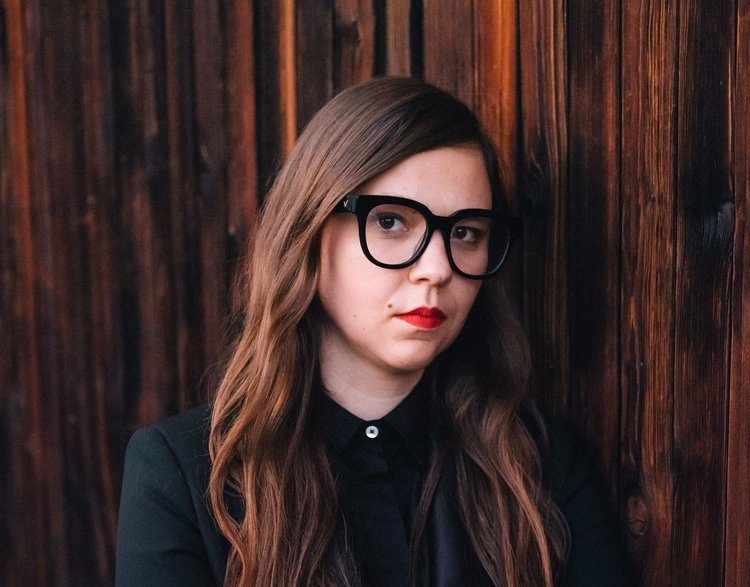
Norsk følger under
ECOPHILIA EXHIBITIONS / Meta.Morf 2022
Curator Zane Cerpina, 2022
Ecophilia? Think of Ecophilia as our deep desire to connect with nature. But what is nature really? Except for some made up ecological dreamscapes?
Ecology comes from Greek Oikos, meaning home. Today every aspect of our home is altered by new technologies, man-induced environmental disasters, biotechnological wonders, and blurred borders between the made and the natural. Has our home become alien to us in this age of global ecological transformations? How is ecophilia manifested in the Anthropocene?
The Ecophilia exhibitions of Meta.Morf 2022 present artists who critically question what it means to be a real ecophile –a true lover of nature– today. And how to become better at it?
Ecophilia exhibitions take place at three galleries in Trondheim: i) K-U-K – Kjøpmannsgata Ung Kunst, ii) Trøndelag Center for Contemporary Art, and iii) TEKS.studio. These exhibitions investigate strange concepts of nature and all wonderful manifestations of our love for it.
SPEAKING NATURE
In our search to become better ecophiles, we are desperate to upgrade our communication with nature. Will we ever succeed in truly understanding its language? In the installation Birdsong, Leena Saarinen brings together languages of people and birds by visualizing bird whistle tones through spectrograms. This allows the viewer to read bird songs just like we read words.
And what about understanding plants, who communicate with each other in ways invisible and inaudible to humans? María Castellanos and Alberto Valverde’s video installation Beyond Human Perception compares human and plant response to live music, demonstrating how technology can bring us closer to cross-species conversations.
Then again, humans seem to forget that they are part of nature too. How to love nature within us? In Annike Flo’s work States of Chimera, agar growth medium is contaminated with her own microorganisms to create a living sculpture. This is a manifestation for erotic and queer love for the human body.
BECOMING NATURE
Extreme measures can be taken to satisfy our desire for ultimate naturalness. Yang Zhichao merges symbiotically with nature in the performance Planting Grass where a surgeon inserts two pieces of grass into the artist’s shoulder. What does the inevitable and painful bodily rejection of the plant roots tell us about our physical bonds with nature?
If our bodies refuse to incorporate more nature within us, can we immerse ourselves in nature instead? In the durational artwork Be-coming Tree, Jatun Risba lays naked in the forest throughout seasons as if she is one with the mycelium network of trees.
What would happen if we traded our comfort with the living conditions of animals? With the help of prosthetics, Thomas Thwaites takes on the seemingly careless life of a goat in his work Goatman (A holiday from being human). Roaming together with his newfound four-legged companions, Twaites contemplates stripping away the role of humans in the hierarchy of nature.
BECOMING ECOPHILE
Can thinking from the perspective of non-humans make us better ecophiles? What if a true form of ecophilia requires us to give back to nature more than we have taken? To Flavour Our Tears: eyePhones v. 3.0 by The Center for Genomic Gastronomy allows the audience to explore their role as a sustainable food source to other species. Why not flavour our bodies to taste better?
How far are we willing to modify our bodies to benefit non-humans? In the work I Wanna Deliver a Dolphin…, Ai Hasegawa speculates on becoming a surrogate mother to pass on the genes of endangered species. Can nature finally seek refuge in our man-made Oikos?
Should ecophiles provide services to nature? Hibernaculum (Moth-) by Marius Presterud is an ecovention inviting insects back to cities. Making sculptures from materials found in urban environments he creates refuge for moths.
There are many ways an ecophile can cater for non-human needs. In the work Manure From Money, Marius Presterud utilizes coins to extract vital micronutrients such as iron, copper and zinc that are vital for plants.
And what about those who refuse to accept and embrace their role in nature as a giver and a lover? How to make sure that we all care? In her installation Aquadisia, Stephanie Rothenberg proposes to utilize genetic engineering and the mythical powers of the oysters to create a serum turning humans into more compassionate beings.
ANTHROPOCENE NATURE
The real challenge to sustain ourselves without nature is poorly understood. The Life Support System by disnovation.org exposes the fundamental importance of the natural ecosystems by creating an artificial, closed-loop system to cultivate a one square meter of wheat. Another 99 such high-cost units are necessary to sustain a human for one year.
In the Anthropocene, nature is increasingly marked by environmental changes and the extinction of species. How to cope with the disappearance of nature? In the video installation Goth Beekeeping Marius Presterud begets a ritual burning to confront the loss of natural habitat due to ever expanding human-built environments.
Can paradise lost be immortalized through digital technologies? In his work Re-Animated, Jakob Kudsk Steensen creates a vast virtual landscape to show the disappearance of the Kaua’i ʻōʻō bird from the islands of Hawai’i. Do we really care about the lost nature? Or are we simply drawn to the spectacle of ecological disasters?
In his installation No Man’s Land Frank Ekeberg uses sound to illustrate the disappearance of rainforest in the west coast of Norway. Transitions from rich and natural to digitally created soundscapes lead the audience into speculations about the future. Can our lost nature be replaced by artificial life?
Or are we drifting through fictional worlds to escape the reality of the Anthropocene? Annie Hägg’s video installation PsXCare uses the aesthetics of a video game to address the unsustainable consumption of natural resources in order to maintain our beautiful virtual landscapes.
And how do these blurred lines between the made and natural affect our philias towards nature? A Bestiary of the Anthropocene by disnovation.org helps to navigate the new hybrid beings that coexist with us in this post-natural era. Can we ever truly love the emergent species of the Anthropocene?
Nature is always in constant change. What if we would lose our man-made nature too? Maren Dagny Juell’s video installation The Party looks back at our obsession with plastic from a future perspective. Will today’s plastic products once become rare and fetishistic objects in a post-plastic world?
Now it is time to dive into ecophilia.
Unleash your inner ecophile.
Go find your love. Your true nature.
ECOPHILIA-utstillingene / Meta.Morf 2022
Kurator Zane Cerpina, 2022
Økofili? Tenk på økofili som vår dype trang til å knytte oss til naturen. Men hva er egentlig natur? Bortsett fra noen oppdiktede økologiske drømmelandskap?
Økologi kommer fra det greske Oikos, som betyr hjem. I dag er ethvert aspekt av hjemmet vårt endret av ny teknologi, menneskeskapte miljøkatastrofer, bioteknologiske underverker og uklare skillelinjer mellom det tilvirkede og det naturlige. Har hjemmet vårt blitt fremmed for oss i denne tiden med globale økologiske transformasjoner? Hvordan manifesterer økofili seg i antropocen?
I Ecophilia-utstillingene på Meta.Morf 2022 presenteres kunstnere som stiller kritiske spørsmål ved hva det vil si å være en ekte økofil – en sann elsker av naturen – i dag. Og hvordan bli bedre til det?
Ecophilia-utstillingene finner sted på tre gallerier i Trondheim: i) K-U-K – Kjøpmannsgata Ung Kunst, ii) Trøndelag senter for samtidskunst og iii) TEKS.studio. Disse utstillingene utforsker merkverdige naturbegreper og fantastiske manifestasjoner av vår kjærlighet til den.
SNAKKE NATUR
I vår søken etter å bli bedre økofile er vi desperate etter å oppgradere vår kommunikasjon med naturen. Vil vi noen gang lykkes med virkelig å forstå språket? I installasjonen Birdsong fører Leena Saarinen språket til mennesker og fugler sammen ved å visualisere fuglekvitter gjennom spektrogrammer. På denne måten kan seeren lese fuglesanger akkurat som vi leser ord.
Og hva med å forstå planter, som kommuniserer med hverandre på måter som er usynlige og uhørbare for mennesker? María Castellanos og Alberto Valverdes videoinstallasjon Beyond Human Perception sammenligner menneskers og planters respons på levende musikk og viser hvordan teknologi kan bringe oss nærmere å føre samtaler på tvers av arter.
Men igjen ser det ut til at menneskene glemmer at også de er en del av naturen. Hvordan elske naturen i oss? I Annike Flos verk States of Chimera kontamineres agarvekstmedium med hennes egne mikroorganismer for å skape en levende skulptur. Dette er en manifestasjon av erotisk og skeiv kjærlighet til menneskekroppen.
BLI NATUR
Ekstreme tiltak kan iverksettes for å tilfredsstille vårt ønske om maksimal naturlighet. Yang Zhichao smelter symbiotisk sammen med naturen i performancen Planting Grass hvor en kirurg innsetter to gressbiter i kunstnerens skulder. Hva forteller den uunngåelige og smertefulle kroppslige avvisningen av planterøttene oss om våre fysiske bånd til naturen?
Hvis kroppene våre nekter å inkorporere mer natur i oss, kan vi fordype oss i naturen i stedet? I det kontinuerlige kunstverket Be-coming Tree ligger Jatun Risba naken i skogen gjennom årstidene som om hun er ett med mycelnettverket av trær.
Hva ville skje hvis vi byttet vår komfort med levekårene til dyr? Ved hjelp av proteser inntar Thomas Thwaites det tilsynelatende bekymringsfrie livet til en geit i sitt verk Goatman (A holiday from being human). Thwaites streifer rundt sammen med sine nyvunne firbeinte følgesvenner og funderer over å fjerne menneskets rolle i naturens hierarki.
BLI ØKOFIL
Kan det å tenke utfra ikke-menneskers perspektiv gjøre oss til bedre økofile? Hva om en ekte form for økofili krever at vi gir tilbake til naturen mer enn vi har tatt? I To Flavor Our Tears: eyePhones V. 3.0 lar The Center for Genomic Gastronomy publikum utforske rollen som bærekraftig matkilde for andre arter. Hvorfor ikke smaksette kroppen vår slik at den smaker bedre?
Hvor langt er vi villige til å modifisere kroppene våre til fordel for ikke-mennesker? I verket I Wanna Deliver a Dolphin… spekulerer Ai Hasegawa i å bli surrogatmor for å videreføre genene til truede arter. Kan naturen endelig søke tilflukt i vårt menneskeskapte Oikos?
Bør økofile yte tjenester til naturen? Hibernaculum (Moth-) av Marius Presterud er en økokonvensjon som inviterer insekter tilbake til byene. Ved å lage skulpturer av materialer funnet i urbane miljøer skaper han et tilfluktssted for møll.
Det er mange måter en økofil kan dekke ikke-menneskelige behov på. I verket Manure From Money bruker Marius Presterud mynter til å utvinne livsviktige mikronæringsstoffer som jern, kobber og sink, som er livsviktige for planter.
Og hva med de som nekter å akseptere og omfavne sin rolle i naturen som giver og elsker? Hvordan sørge for at vi alle bryr oss? I sin installasjon Aquadisia foreslår Stephanie Rothenberg å bruke genteknologi og østersens mytiske krefter til å lage et serum som gjør mennesker til mer medfølende vesener.
ANTROPOCEN NATUR
Vi har liten forståelse av den virkelige utfordringen med å opprettholde oss selv uten natur. Life Support System av disnovation.org viser den fundamentale betydningen av de naturlige økosystemene ved å lage et kunstig, lukket system for å dyrke én kvadratmeter hvete. Ytterligere 99 slike høykostnadsenheter kreves for å ernære et menneske i ett år.
I antropocen er naturen i økende grad preget av miljøendringer og utryddelse av arter. Hvordan takle forsvinningen av naturen? I videoinstallasjonen Goth Beekeeping frembringer Marius Presterud en rituell brenning for å konfrontere tapet av naturlig habitat på grunn av stadig voksende menneskeskapte omgivelser.
Kan det tapte paradis foreviges gjennom digitale teknologier? I sitt verk Re-Animated skaper Jakob Kudsk Steensen et vidstrakt virtuelt landskap for å vise forsvinningen av fuglen kauaihonningeter fra Hawaii. Bryr vi oss virkelig om den tapte naturen? Eller er vi rett og slett tiltrukket av skuet av økologiske katastrofer?
I sin installasjon Ingenmannsland bruker Frank Ekeberg lyd for å illustrere forsvinningen av regnskog på vestkysten av Norge. Overganger fra rike og naturlige til digitalt skapte lydlandskap leder publikum inn i spekulasjoner om fremtiden. Kan vår tapte natur erstattes av kunstig liv?
Eller glir vi gjennom fiktive verdener for å unnslippe realitetene ved antropocen? Annie Häggs videoinstallasjon PsXCare bruker estetikken til et videospill for å fremvise det ikke bærekraftige forbruket av naturressurser for å opprettholde våre vakre virtuelle landskap.
Og hvordan påvirker disse uskarpe linjene mellom det fremstilte og det naturlige våre filier mot naturen? A Bestiary of the Anthropocene av disnovation.org hjelper oss å navigere blant de nye hybridvesenene som eksisterer sammen med oss i denne post-naturlige epoken. Kan vi noen gang virkelig elske den fremvoksende antropocen-arten?
Naturen er alltid i konstant forandring. Hva om vi også ville miste vår menneskeskapte natur? Maren Dagny Juells videoinstallasjon The Party ser tilbake på vår besettelse med plast fra et fremtidsperspektiv. Vil dagens plastprodukter en gang bli sjeldne og fetisjistiske objekter i en post-plastisk verden?
Nå er tiden til å dykke ned i økofili.
Slipp løs din indre økofil.
Finn kjærligheten din. Din sanne natur.
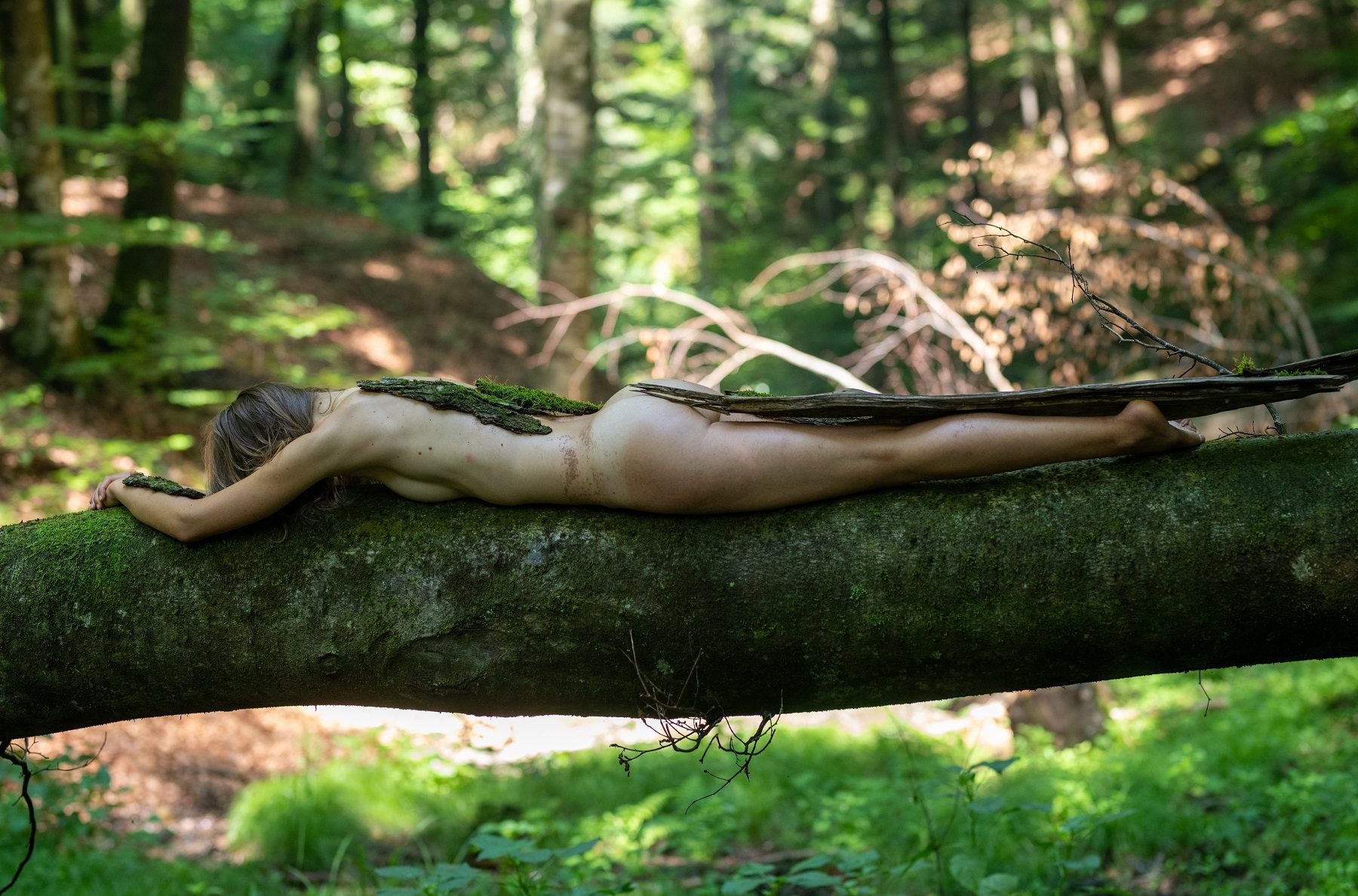
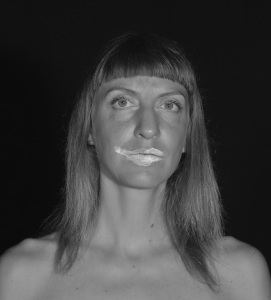
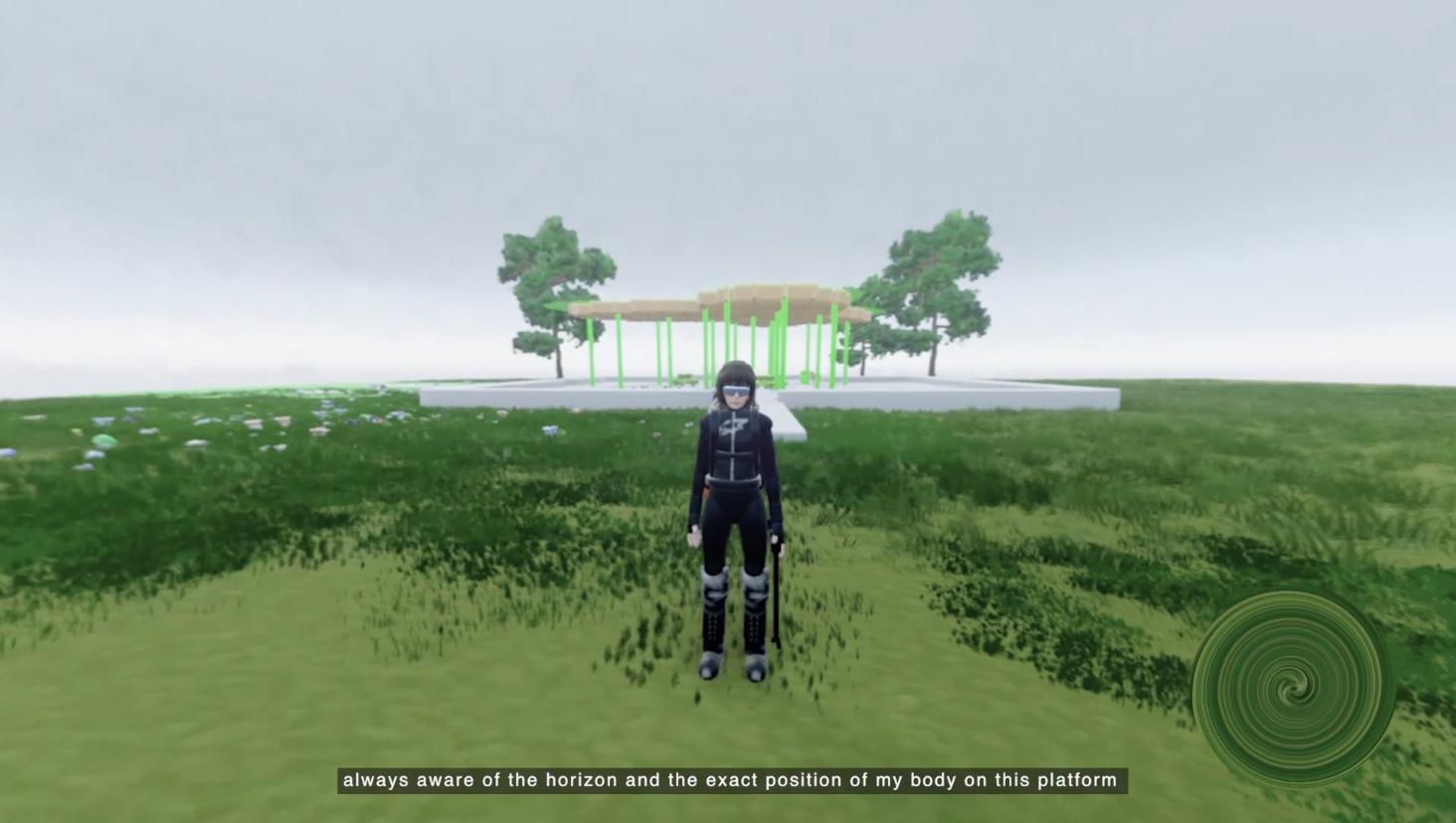
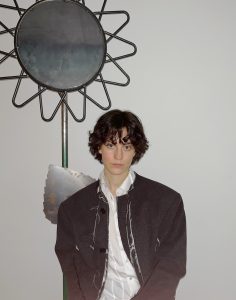 Annie Hägg, born in Växjö, Sweden, received her Bachelor in Fine arts from Oslo National Academy of the Arts in 2021. Hägg’s work focuses on the constructed and designed aspects of modern society both from a social, economical and environmental point of view. Her practice includes storytelling as a way of articulating how characteristics of contemporary changes affect our perception of reality and emotional states, how they manifest in the mind and the body.
Annie Hägg, born in Växjö, Sweden, received her Bachelor in Fine arts from Oslo National Academy of the Arts in 2021. Hägg’s work focuses on the constructed and designed aspects of modern society both from a social, economical and environmental point of view. Her practice includes storytelling as a way of articulating how characteristics of contemporary changes affect our perception of reality and emotional states, how they manifest in the mind and the body.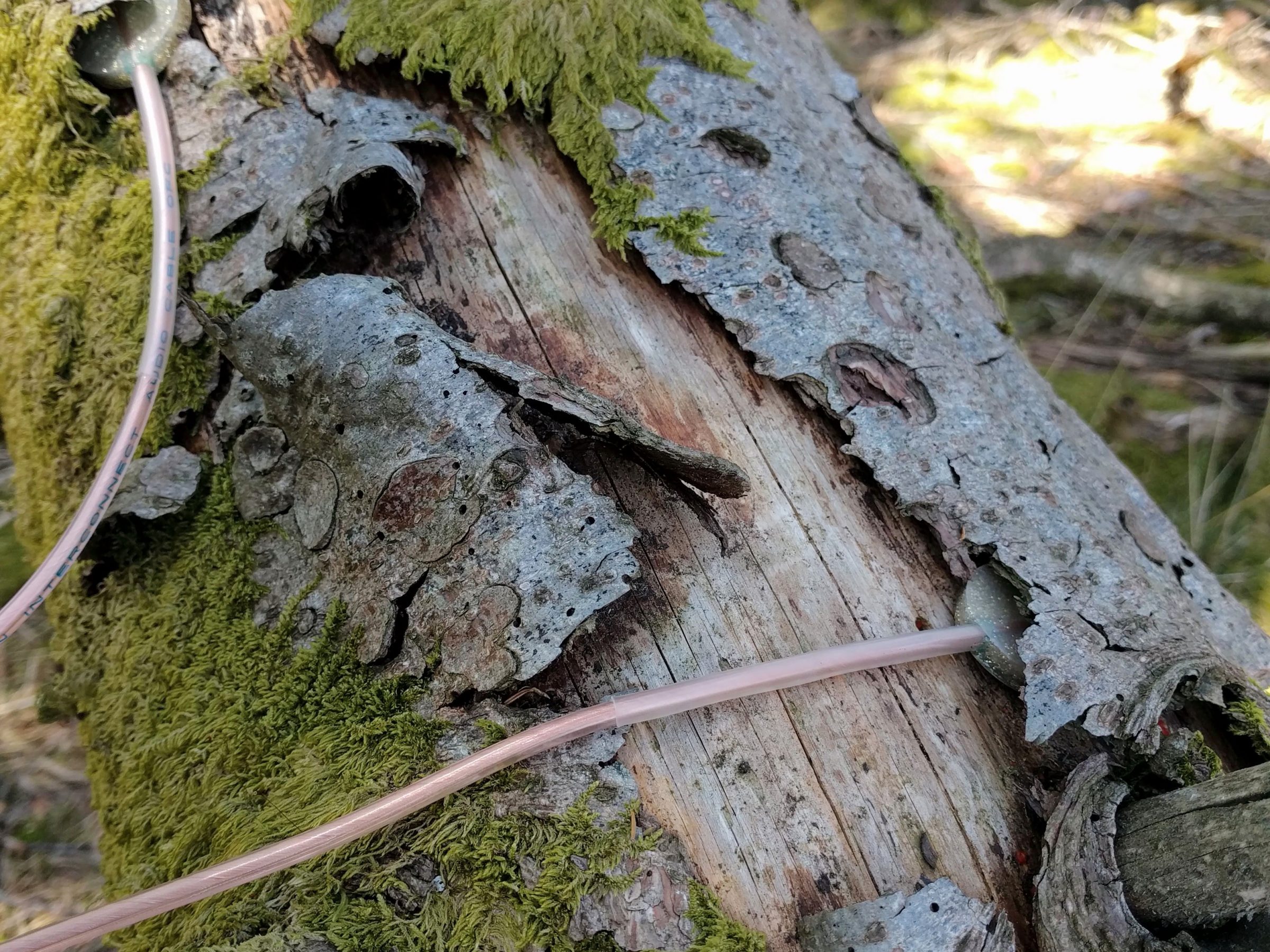
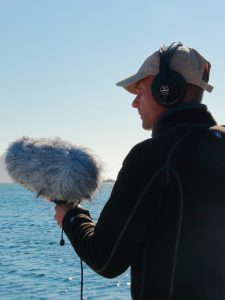 Frank Ekeberg is a transdisciplinary artist, music composer and researcher working in the intersection of art, science and technology. He received an undergraduate degree in music from the Norwegian University of Science and Technology (NTNU) before he went on to pursue a master’s degree in electronic music at Mills College in Oakland, California, where he studied composition with Pauline Oliveros and Alvin Curran, and a PhD in electroacoustic music composition at City University London, UK, under Denis Smalley and Simon Emmerson’s tutelage. Ekeberg’s work explores issues of ecology, time, spatiality and transformation, with a particular focus on nature spaces, ecosystems and the interplay between human and non-human worlds. His research-based approach often involves collaborations within as well as beyond the art field. He has composed and designed sound for concert performance, dance, film, theater, radio plays and intermedia installations. His work is widely presented in festivals, exhibitions, concerts and conferences around the world, including venues such as Museum Angewandte Kunst in Frankfurt, Germany; The Peale Center in Baltimore, Maryland, USA; Kunsthall Trondheim, Norway; Kiasma Museum of Contemporary Art in Helsinki, Finland; Fotografie Forum Frankfurt, Germany; Foggy Bottom Sculpture Biennial in Washington D.C., USA; Seoul Arts Center, Korea; multiple times at the International Symposium on Electronic Art, and many more. Ekeberg was awarded the 2017 Smithsonian Artist Research Fellowship, and is currently Research Associate at the Smithsonian National Museum of Natural History in Washington D.C., USA. Most of the time he lives and works in Trondheim, Norway.
Frank Ekeberg is a transdisciplinary artist, music composer and researcher working in the intersection of art, science and technology. He received an undergraduate degree in music from the Norwegian University of Science and Technology (NTNU) before he went on to pursue a master’s degree in electronic music at Mills College in Oakland, California, where he studied composition with Pauline Oliveros and Alvin Curran, and a PhD in electroacoustic music composition at City University London, UK, under Denis Smalley and Simon Emmerson’s tutelage. Ekeberg’s work explores issues of ecology, time, spatiality and transformation, with a particular focus on nature spaces, ecosystems and the interplay between human and non-human worlds. His research-based approach often involves collaborations within as well as beyond the art field. He has composed and designed sound for concert performance, dance, film, theater, radio plays and intermedia installations. His work is widely presented in festivals, exhibitions, concerts and conferences around the world, including venues such as Museum Angewandte Kunst in Frankfurt, Germany; The Peale Center in Baltimore, Maryland, USA; Kunsthall Trondheim, Norway; Kiasma Museum of Contemporary Art in Helsinki, Finland; Fotografie Forum Frankfurt, Germany; Foggy Bottom Sculpture Biennial in Washington D.C., USA; Seoul Arts Center, Korea; multiple times at the International Symposium on Electronic Art, and many more. Ekeberg was awarded the 2017 Smithsonian Artist Research Fellowship, and is currently Research Associate at the Smithsonian National Museum of Natural History in Washington D.C., USA. Most of the time he lives and works in Trondheim, Norway.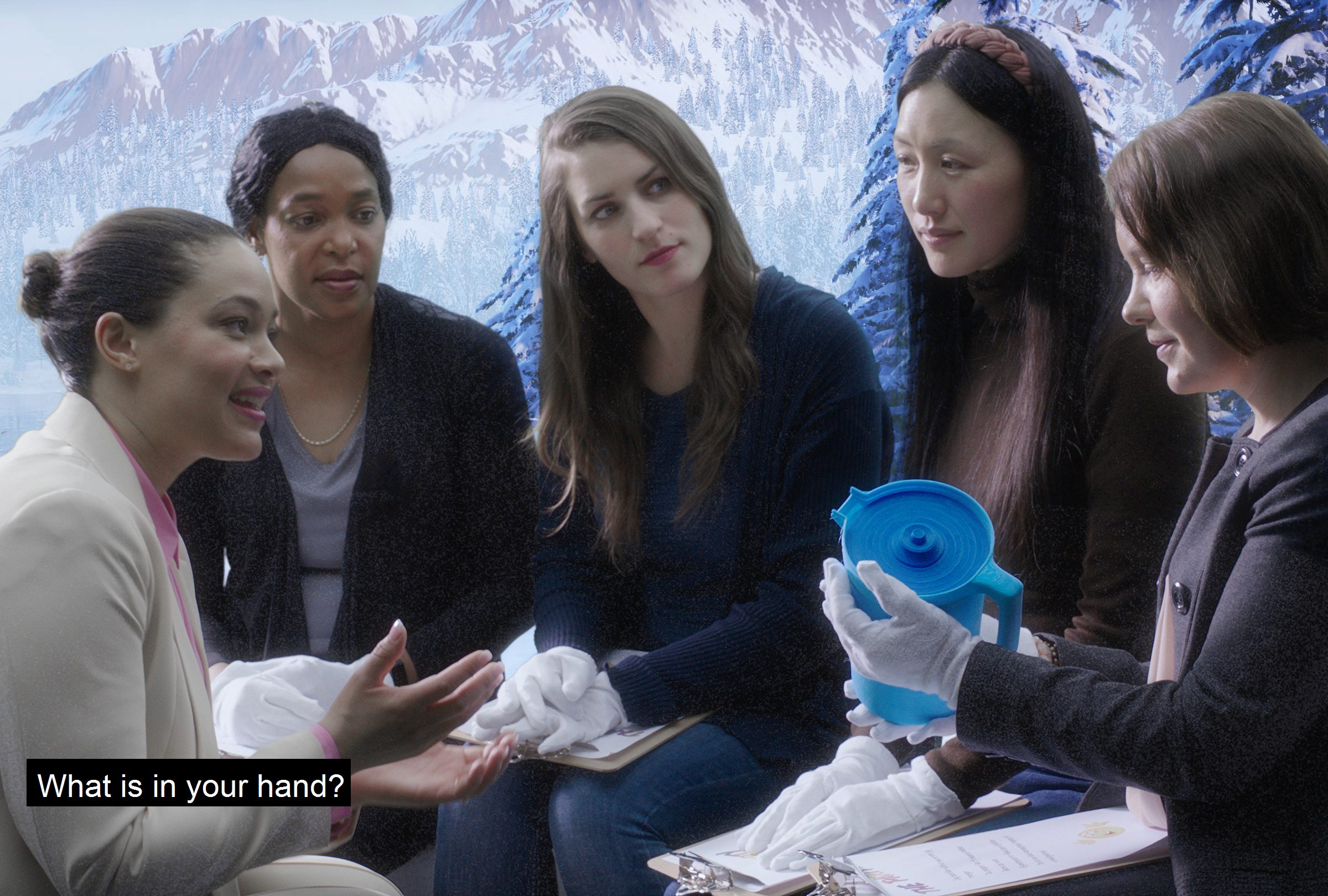
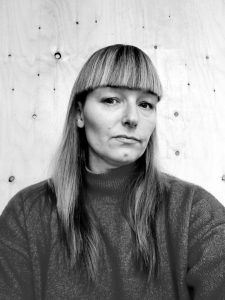 Maren Dagny Juell (1976) is based in Ski, Norway, and works with video, Virtual Reality, and installation.
Maren Dagny Juell (1976) is based in Ski, Norway, and works with video, Virtual Reality, and installation.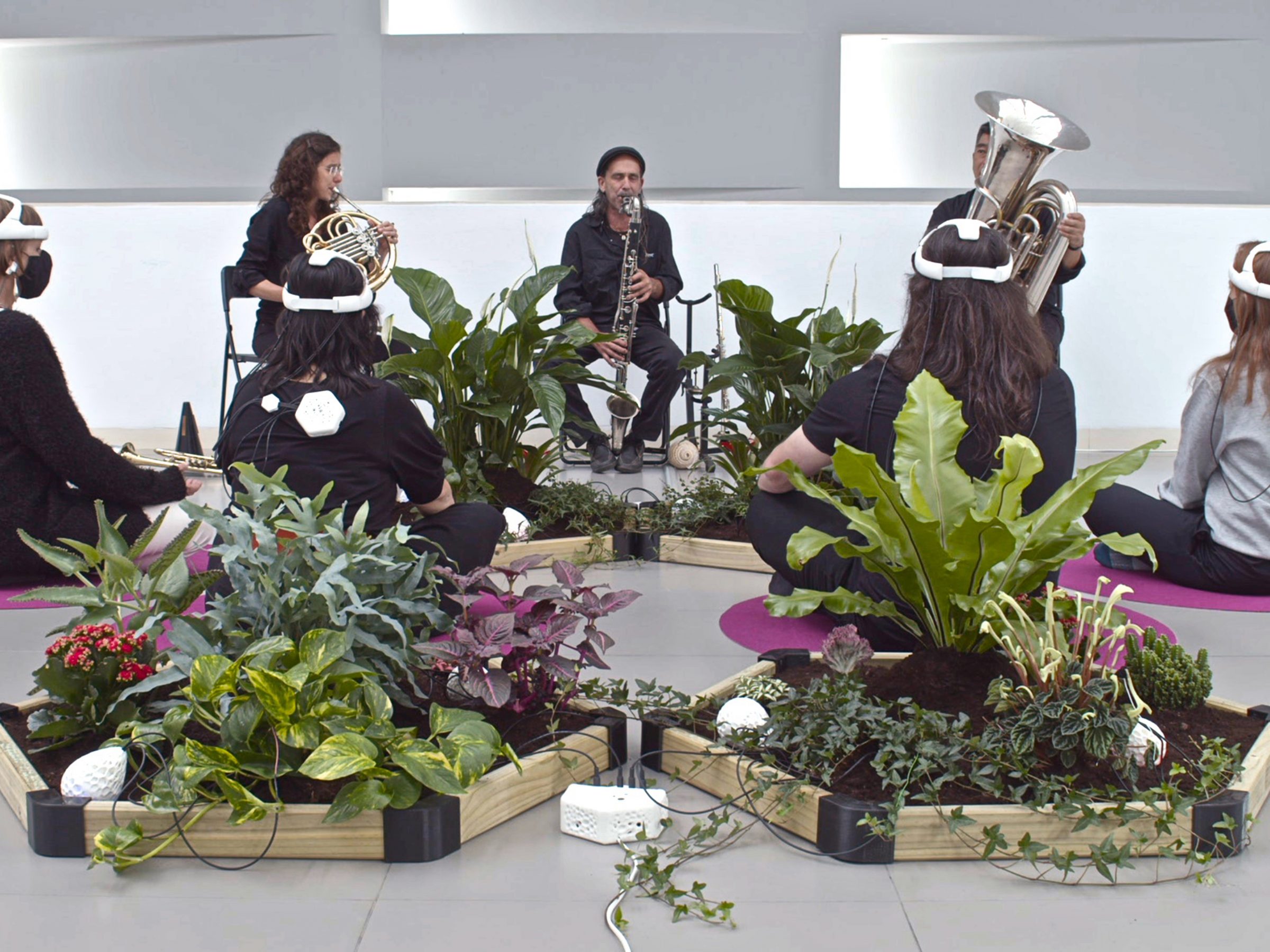
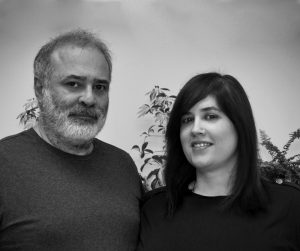 María Castellanos and Alberto Valverde (uh513) began working together as a duo in 2009. María Castellanos is an artist and researcher working at the intersection of art, science, technology and society. Currently she is postdoctoral researcher at Oslo Metropolitan University, in the framework of FeLT Project – Futures of Living Technologies.
María Castellanos and Alberto Valverde (uh513) began working together as a duo in 2009. María Castellanos is an artist and researcher working at the intersection of art, science, technology and society. Currently she is postdoctoral researcher at Oslo Metropolitan University, in the framework of FeLT Project – Futures of Living Technologies.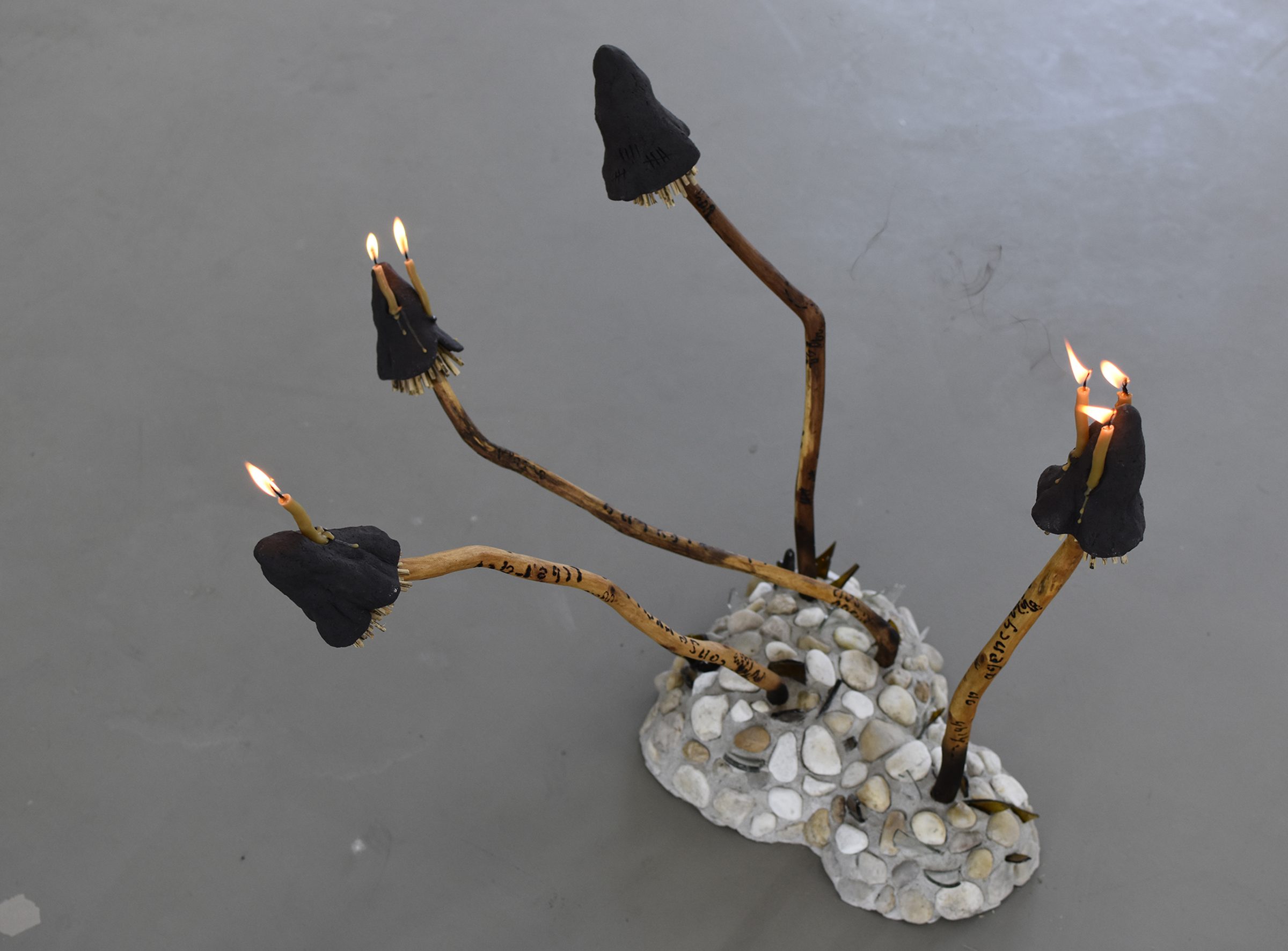
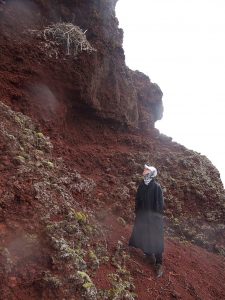 Marius Presterud (b.1980, Drammen) is a Norwegian artist based in Berlin and Oslo. He works across a variety of media; performance, poetry, sculpture and ecoventions. He has toured Europe and been a featured poet at venues in Paris, Berlin and Istanbul, and he has performed in established galleries such as Henie Onstad Art Center, Norway, and Hamburger Bahnhof, Germany. In 2018 he was a debutant at Norway’s 131. National Art Exhibition, Høstutstillingen, and in 2021 he had his first solo exhibition abroad, at Exgirlfriend Gallery, Berlin. Common themes throughout his work are a focus on selfhood, significant otherness and societal health.
Marius Presterud (b.1980, Drammen) is a Norwegian artist based in Berlin and Oslo. He works across a variety of media; performance, poetry, sculpture and ecoventions. He has toured Europe and been a featured poet at venues in Paris, Berlin and Istanbul, and he has performed in established galleries such as Henie Onstad Art Center, Norway, and Hamburger Bahnhof, Germany. In 2018 he was a debutant at Norway’s 131. National Art Exhibition, Høstutstillingen, and in 2021 he had his first solo exhibition abroad, at Exgirlfriend Gallery, Berlin. Common themes throughout his work are a focus on selfhood, significant otherness and societal health.